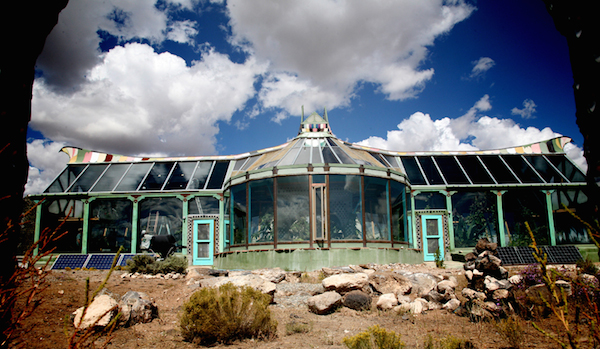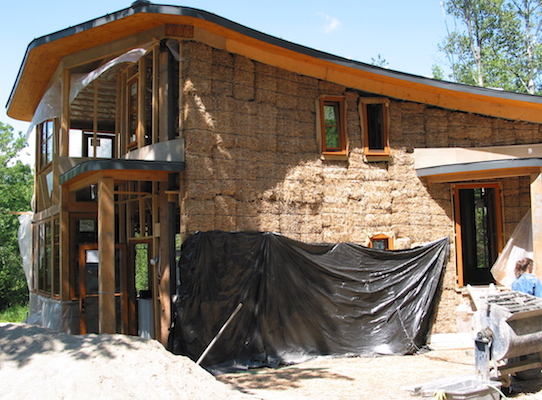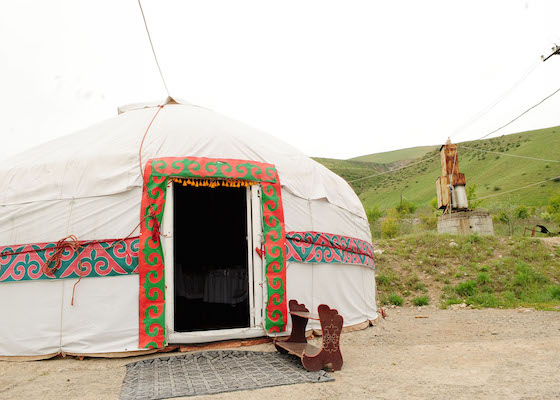It was on a sunny morning, while feeding our two pigs, that I was struck with an astounding revelation.
As they tucked into their meal of grain and bananas I considered that most famous pig tale—The Three Little Pigs—when it suddenly occurred to me: The Three Little Pigs wasn’t just a Fairy Tale, it was bare faced propaganda by the building industry!
Think about it: any little pig that uses cheap and natural materials gets eaten by a wolf but the piggy, who invested in some bricks (and most likely a lifelong mortgage), lives happily ever after. Is it a coincidence that this story first appears around 1840? The same time as the Industrial Revolution was taking hold? I think not!
Okay, maybe I’m getting being a bit twitchy here. Perhaps it is just a story. But nonetheless, it’s an interesting social commentary, that not only depicts our movement away from natural building materials, but also towards more urbanised living where perhaps wolves were more numerous.
But what does it mean now to us modern folk? Well, for me, to afford a brick house means many years of saving for a deposit, followed by many years of mortgage repayments. With today’s economic crisis, a brick house is probably more likely to bring the “wolf to your door” than anything else.
So maybe the other pigs were on to something. A lot of young people are finding they are unable to afford their own brick home and there is a growing trend of building homes out of wood, straw and mud. With careful planning and using of recycled materials a home can end up costing as little as £5,000.
Instead of enslaving ourselves to the banks there are many other options we can chose from. If we can gather enough of our friends to buy a piece of land, then each of us would be able to make our own homes with only thousands of pounds instead of hundreds of thousands.
Here are three options to consider:
Earthships.
An Earthship is built from recycled materials such as tires, glass bottles and cans set into the earth to create maximum thermal mass. They usually have large glass walls that, in the winter, harvests heat from the sun and supply beautiful indoor gardens with sunlight. They were invented by Michael Reynolds and do an incredible job at reusing waste materials that would otherwise go into a landfill. Most of the materials are available for free as well. The downsides are that although stunningly beautiful they can also be a lot of work (each tire can take an hour to pack if you do it properly) and they also baffle most planning permission people, so it’s probably best to find a country with lenient rules.
~
The Straw Bale house.
A straw bale house (unlike in the story) can last over a hundred years if looked after properly. Once the wheat is removed the straw becomes a waste material. Straw bale homes are also well insulated and because of the thickness of the wall you can create seats and ledges by each window. You can also shape a bale in any way you want, adding beautiful curves and dimensions to your home. The disadvantages of straw bales homes is that it can be unsuitable in very rainy and humid climates; the local council may not approve of it and the thickness of the walls may use up floor space. Another thing to note is whether the straw may be better off in the ground as biomass. As consumers we often go with what is pretty but using rubbish and keeping it out of landfills would be better for the environment in the long run.
~
Yurts.
Another increasing housing option is the yurt. Traditionally used by nomadic cultures in Central Asia a yurt is a wooden structure that can be dismantled and moved from place to place. However, anything wooden and round is often called a yurt these days. You can build your own yurt for about £2,000. They are cosy and easy to heat and once you’ve bought one and built it you’re free from rent and probably bills as well. The downsides are that they can be cramped and if you happen to live in a rainy place you might get a bit damp. They are also vulnerable to wind so take extra precautions in case of wolves.
~
Cob Houses.
Cob is a mixture of subsoil (a mixture of clay and mud), sand and straw to create a strong material that when dried can last over 600 years! The key here, cob builders say, is to give it a good “pair of shoes” and a good “hat”—meaning solid foundation and a roof that stops water getting into the building. Although it’s a slow process—up to 15 months—you can build a three bedroom cob house with £30,000.
The raw materials are also likely to be on the land you are building so there are very little costs in extracting and transportation. But again, just with the straw bale houses, one needs to question whether they want a pretty house or a sustainable house. By extracting subsoil and wood from the surrounding area you are damaging a habitat where recycled materials would be just a good.
We’ve relied on “experts” to build our homes for too long. Once upon a time we would have all known how to build a house. We don’t need to be in huge amounts of debt to create homes as long as we have imagination and access to some YouTube videos*. Building a home is a dream for many people. There is something magical about living in a place that you gave birth to and worked hard to create. With these types of buildings, and many more, we can unhook ourselves from the mortgage system and live in beautiful, sustainable and creative homes with our friends and extended family and tell the wolf to bugger off.
*There is plenty of information on the internet but I would recommend consulting an architect if you want to build anything substantial. YouTube videos might not be enough for a three bedroom house.
Relephant:
How we can Finally buy Organic food for an Affordable Price.
~
Author: Suzanne Williams
Editor: Travis May
Photo: Author’s Own, Straw Bale House, Yurt, Cob house














Read 0 comments and reply